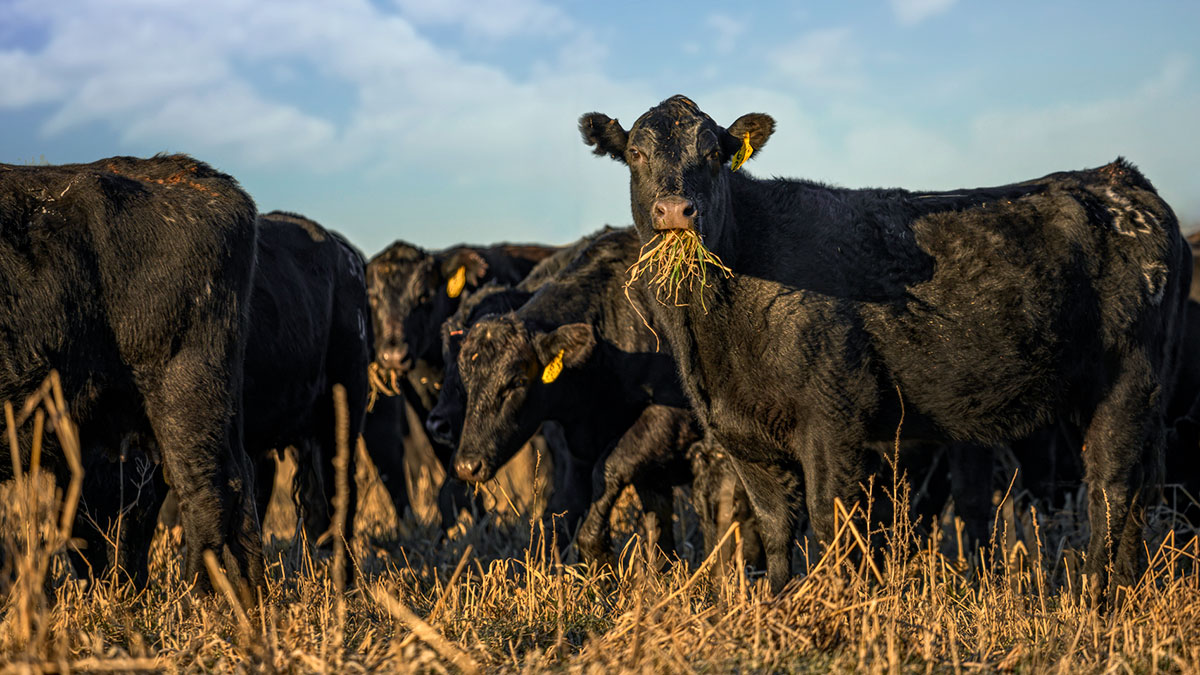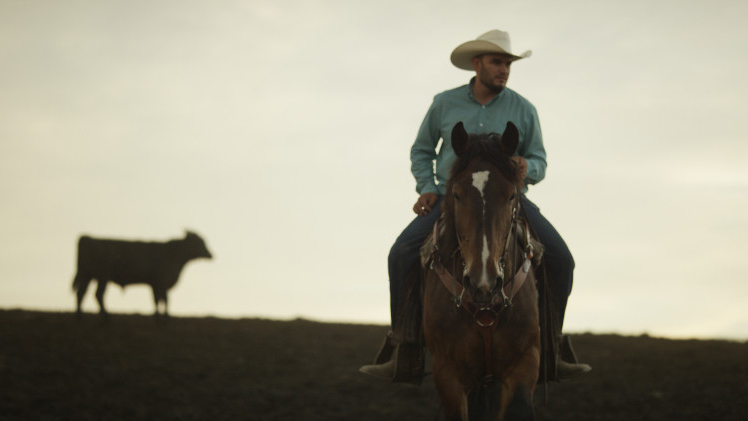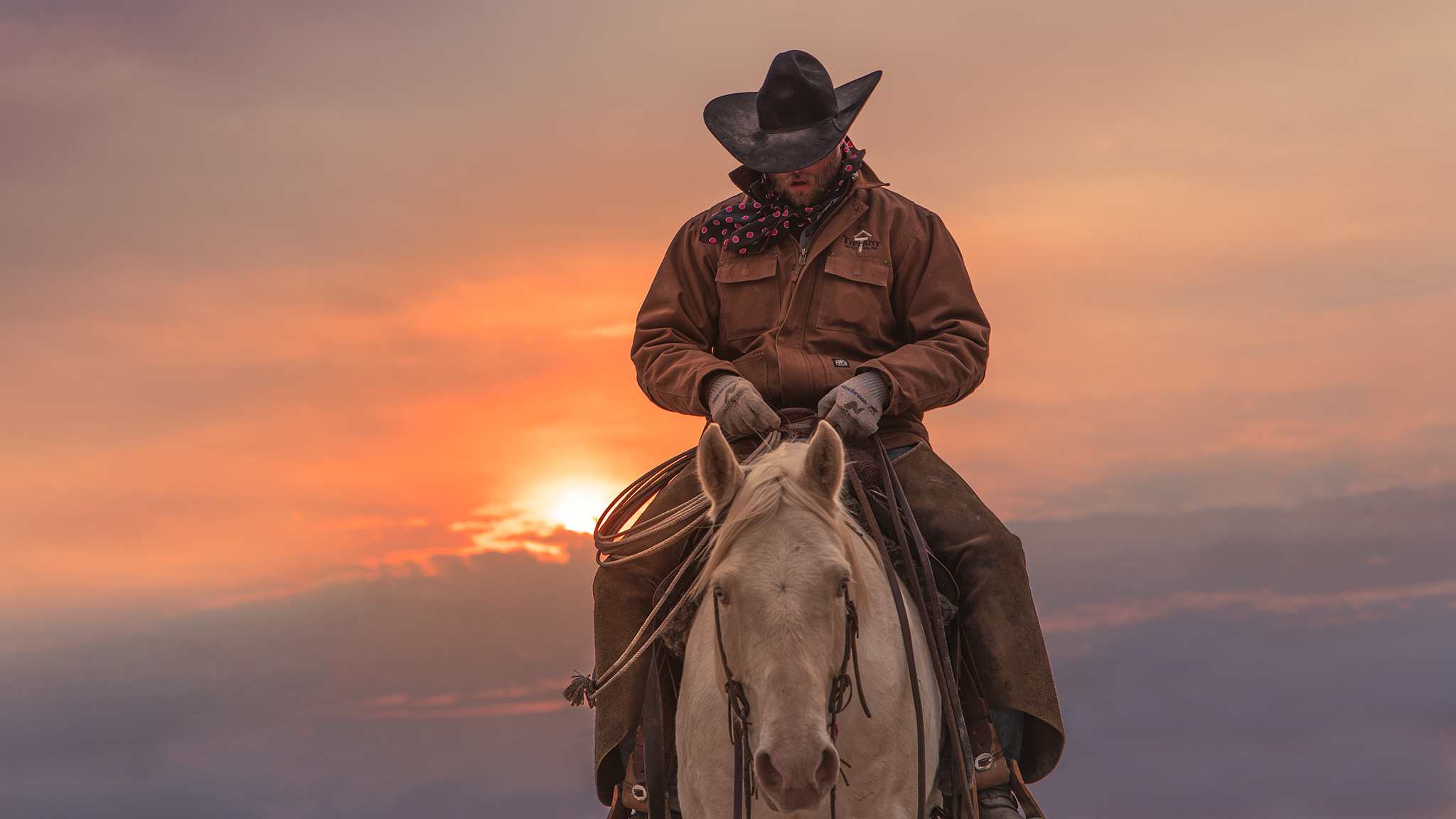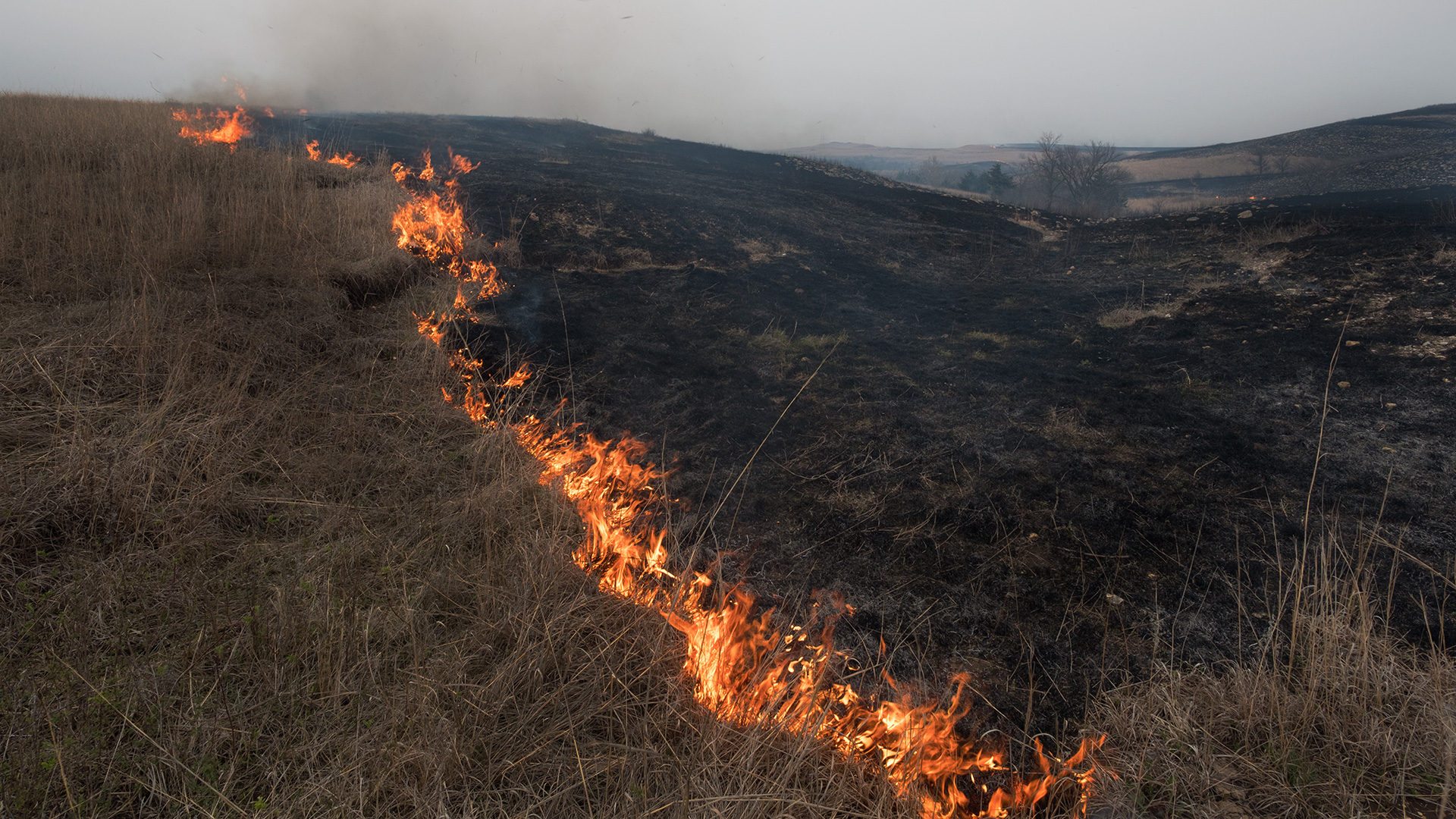feeding cattle in the winter
There are over 700,000 beef producers spread out across every state in the nation with diverse climates, different breeds of cattle and different types of ranches. Every place is unique and there's no one-size-fits-all method to raising and feeding cattle. States like Kansas usually have an abundance of grass in the summer, which goes dormant when it freezes.
So what happens when all that grass goes dormant? What do the cows eat?
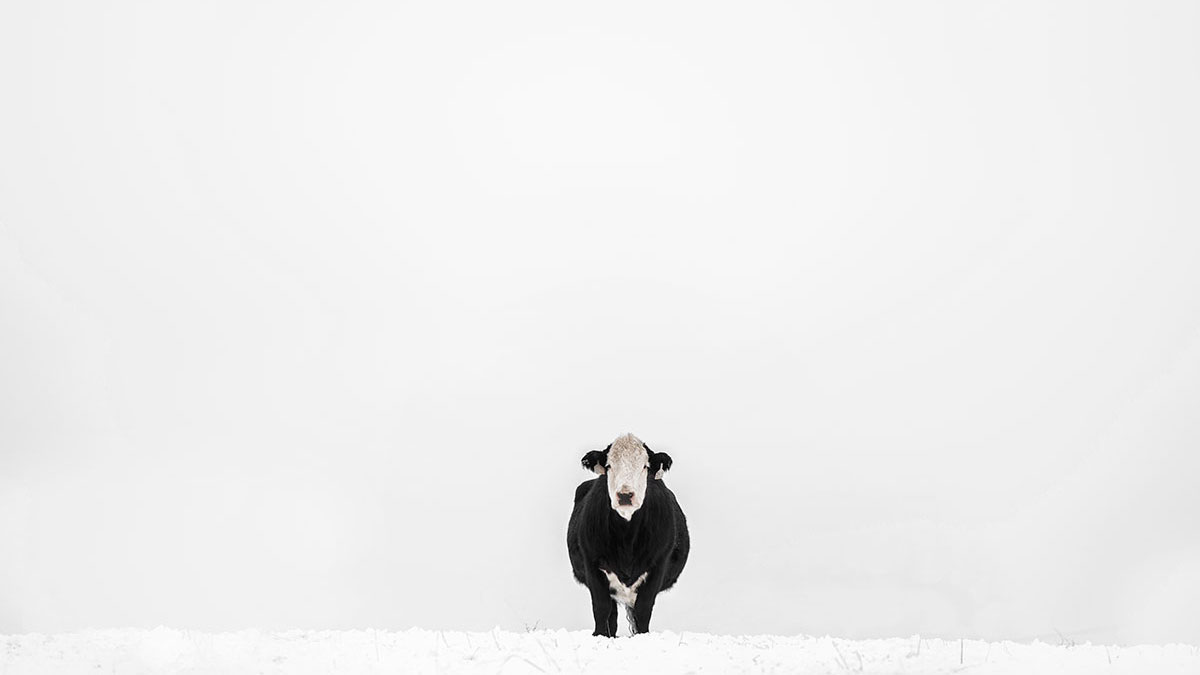
A Snowy Greeting
A cow ambles over the top of a snow-crusted hill to greet a rancher rolling out hay in the pasture. With thick hides and plenty of fat, the cattle are just fine with the cold temperatures.
Cattle still eat grass over the winter. it's just in the form of hay
Have you ever seen those round bales dotting the landscape as you drive down the interstate? In the late summer, fields, pastures, county parks, and even the grass alongside highways and roads are mowed, raked up and baled by tractor before the grass starts to go dormant. While you may wonder why they’re just sitting there, each and every bale is a valuable source of nutrition for cattle, especially in the winter. Many beef producers will start planning their winter feed needs in the fall, and these hay bales are most likely a large part of that equation.
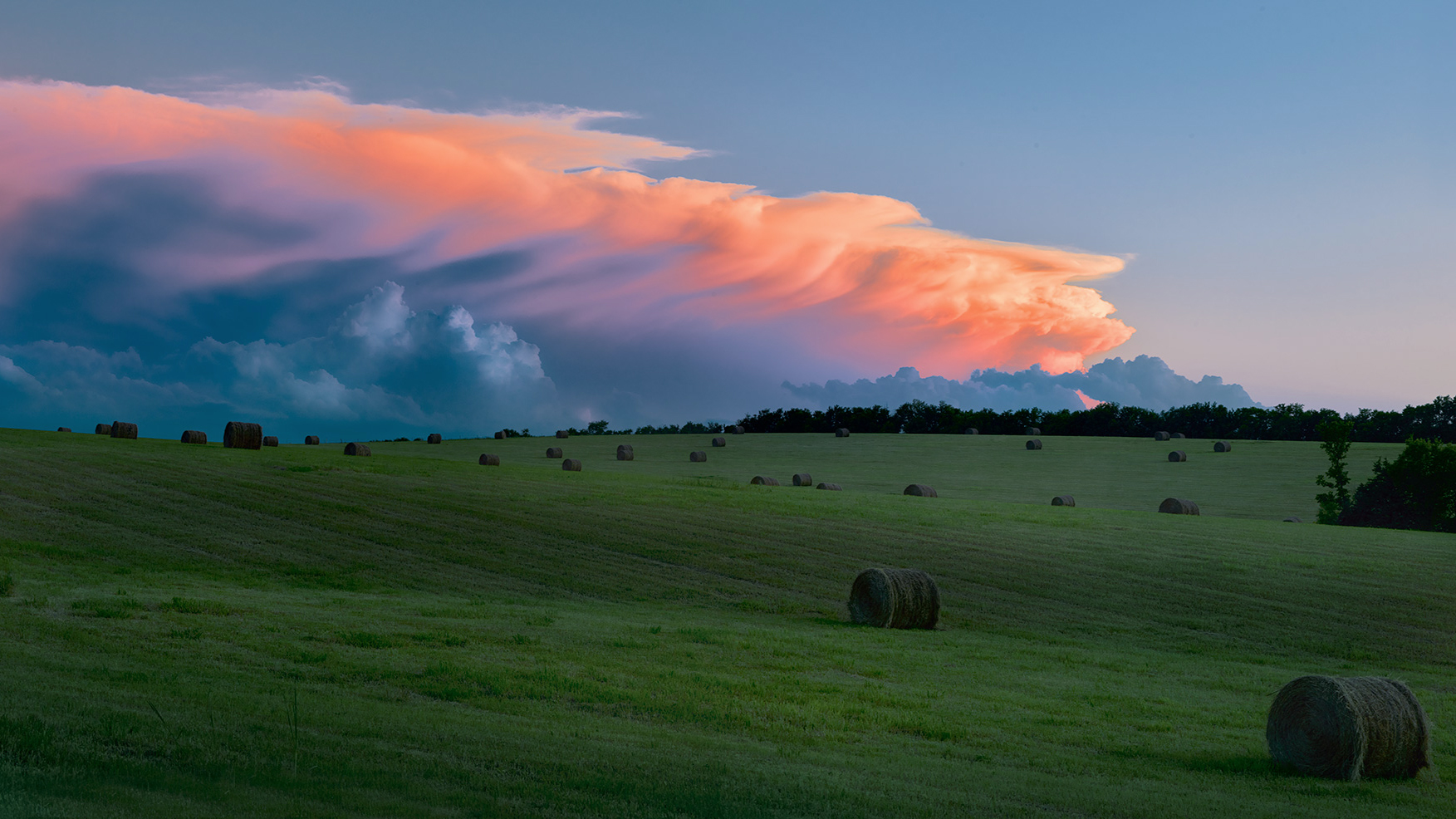
Round Bales in North-Central Kansas
Those round bales are just one of the many examples of how cows are nature’s ultimate “upcyclers”. Their unique digestive system can easily turn that hay and grass into valuable energy and high-quality protein throughout the winter when nothing is growing. As an added bonus, mowing and baling fields can help reduce the fuel load for wildfires.
Since cows are usually roaming pastures over the winter, ranchers will load these round bales onto trucks or tractors and deliver them daily to their cattle in the fields. Think of them as a food delivery service..just in a pickup and cowboy hat.
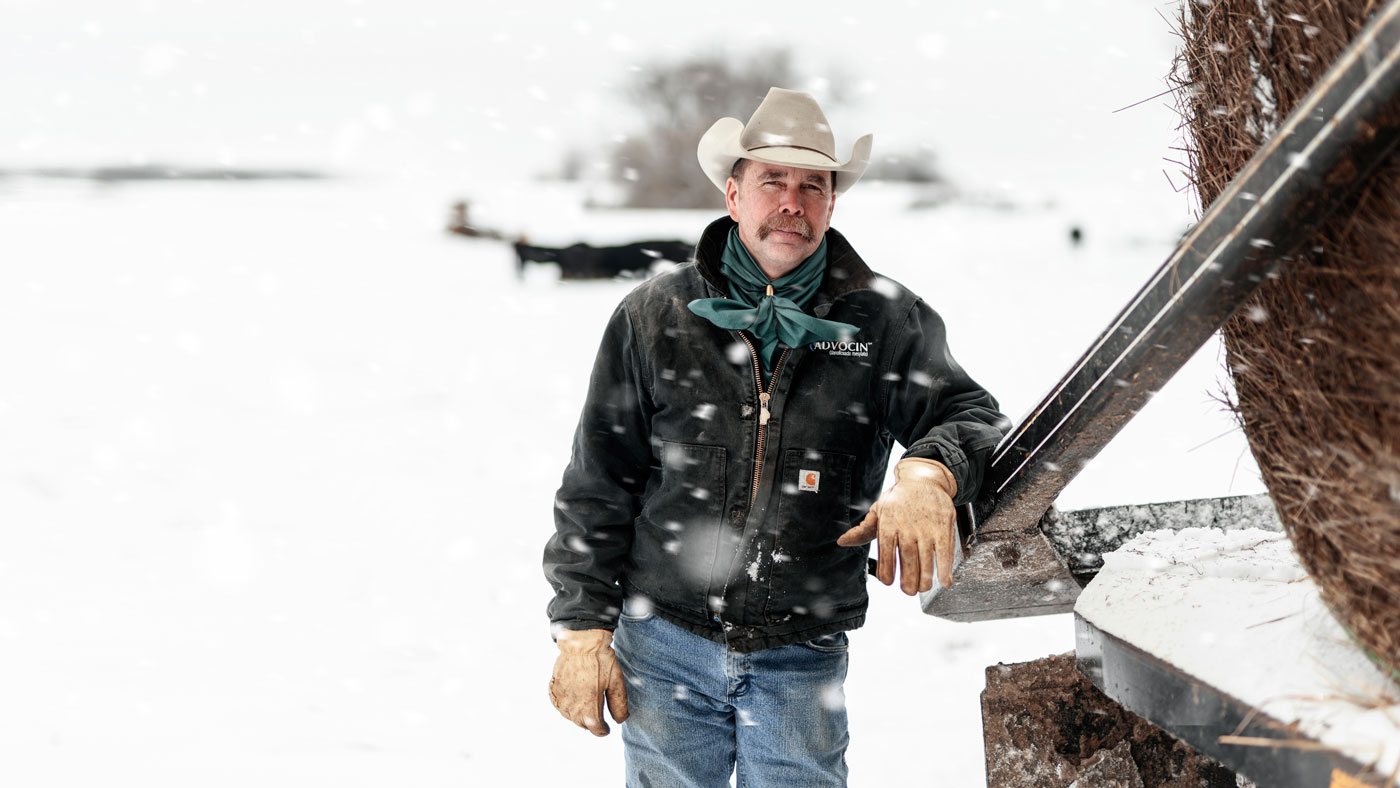
Feeding forage in the winter
A Jefferson County rancher leans against his pickup that has a special attachment for loading and unloading round bales. Upon entering this pasture, the cattle started walking towards the parked truck and can be seen in the background.
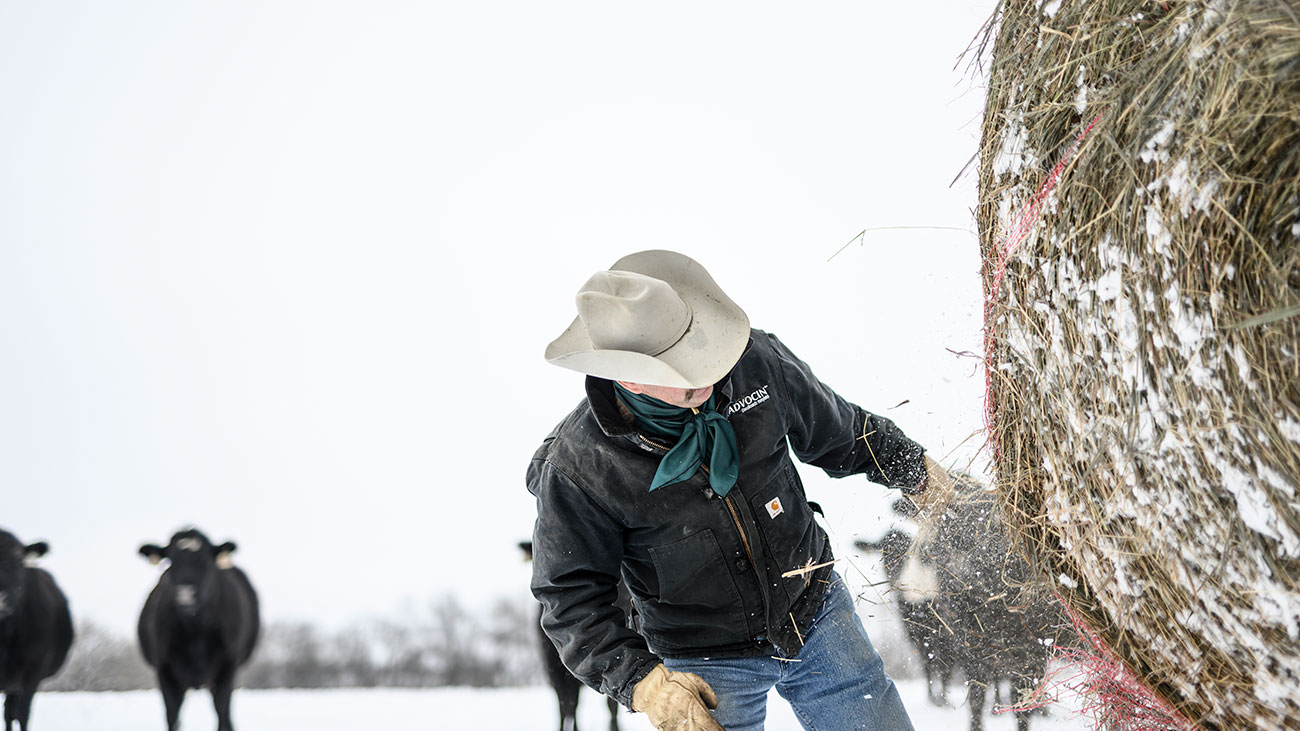
After unrolling the hay, the rancher takes time to individually check on each animal to make sure it is healthy.
grazing plant residue
Kansas is famous for the iconic grasslands that make up the Flint Hill ecosystem, but we also have thousands of farms and ranches that supply grains like wheat, corn and soybeans. While we all have seen those combines out harvesting in the summer or fall, not many of us see what is left behind in the field.
Did you know approximately half the weight of a corn plant remains after harvest in the stalk, leaf, cob and husk? Fortunately, cattle love the residue (leftovers) and the grain left behind by the combine and are able to upcycle this into human-edible protein. In doing so, cattle are transforming a human-inedible byproduct of farming it into high-quality beef. This increases the sustainability of that land. Plus, cattle also leave behind a nitrogen-rich, organic fertilizer that provides nutrients for the following year.
grazing winter wheat
Kansas is the #1 wheat state in the country. Due to the Kansas climate, winter wheat often is planted in the fall and harvested in the summer. Many people who aren't familiar with winter wheat may mistake the wheat for grass because it may appear as green stubble. Wheat is an excellent source of winter time forage for cows and calves and over 2 million head of cattle will graze winter wheat every year.
When grazed properly, winter wheat can provide nutrition to cattle with little to no impact on the potential yield of the wheat crop. The wheat captures energy from the sun and the cattle convert it into beef. The result is more food grown on the same amount of land with the same amount of resources. Now that's sustainability! As an added bonus, cattle manure offers a great source of organic fertilizer for the wheat fields.
Immature winter wheat may look like grass to the untrained eye. However, a large number of cattle graze on winter wheat every year. The practice allows wheat farmers to generate additional income by renting their pastures to cattle producers. Or, if a farmer grows both wheat and cattle, they are able to increase their profitability per acre by producing more food per unit of land.
grazing cover crops
Some fields have bare earth after harvest that is more susceptible to soil erosion. One way to reduce erosion of topsoil is to plant cover crops on a field. Cover crops, like the turnips planted above, are plants that provide temporary soil cover and help with soil conservation by reducing topsoil runoff and improving soil structure. They also can help improve the nutrients in the soil and provide some weed control.
While the primary purpose of these crops is to improve soil health, they offer a great source of nutrition to grazing cattle throughout the winter. These crops not only provide nutrition to cattle, but deer and other species also will graze the plants. Grazing cover crops allows beef producers to add another layer of production to their land that helps offset the cost of planting soil-improving cover crops.
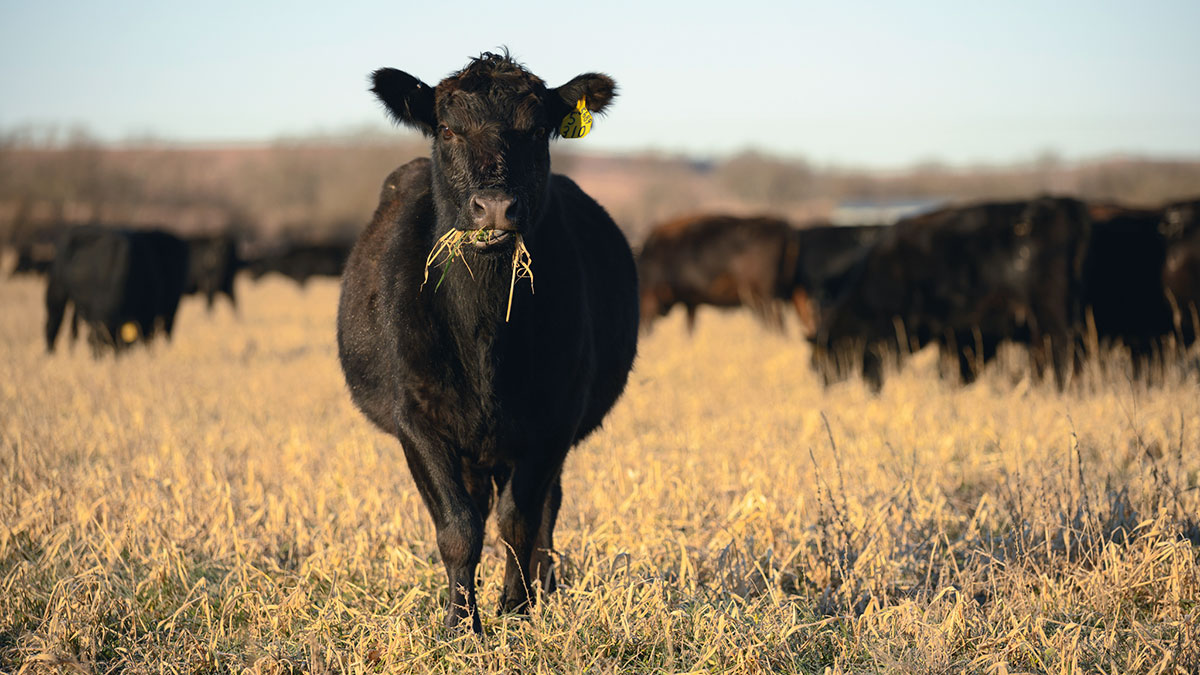
This cow, and the rest of the cattle in the picture, have just been moved onto a new pasture that has been planted with cover crops.
Plenty of access to clean water
Cattle always need a steady supply of water, and that means a lot of extra work for farmers and ranchers when it gets cold. Daily water checks are routine on the farm and often require ice to be broken by hand. In doing so, producers make sure their cattle always have ample access to clean and fresh water.
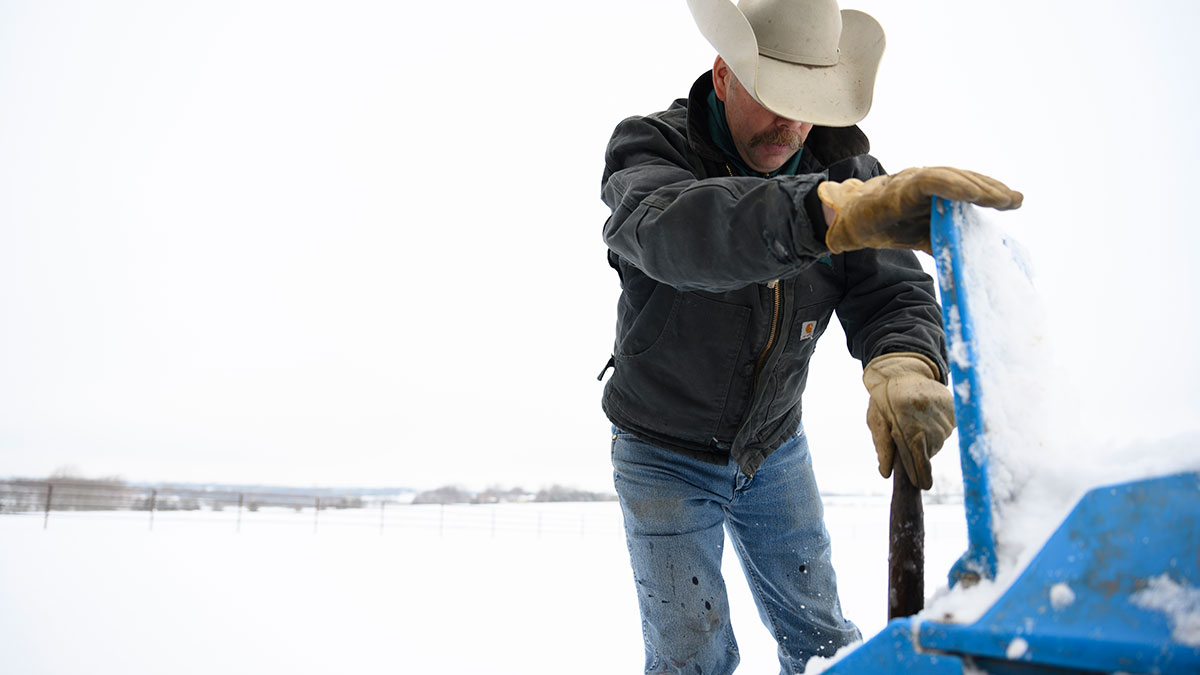
Breaking frozen water
When the temperatures get cold, water will freeze. This means at least daily checks of the water supplies. When needed, beef producers will break apart the ice to give cattle access to water.
Additional supplements as needed
Just like we need that multivitamin, cattle need some extra nutrients as well, especially in the winter. Depending on the age and nutritional needs of cattle, they will be given vitamins and minerals, molasses or supplemental cubes (like an energy bar for cattle) called “cakes”. Additional supplements like distillers' grains may be fed. Distillers' grains are what is left over after breweries make that delicious craft beer that pairs so well with our favorite steak. While it may seem like waste to people, cattle love it and save millions of pounds of distillers' grains from being thrown away each year. The best part is they are able to take something of zero nutritional value to people and upcycle it into delicious, high-quality beef.
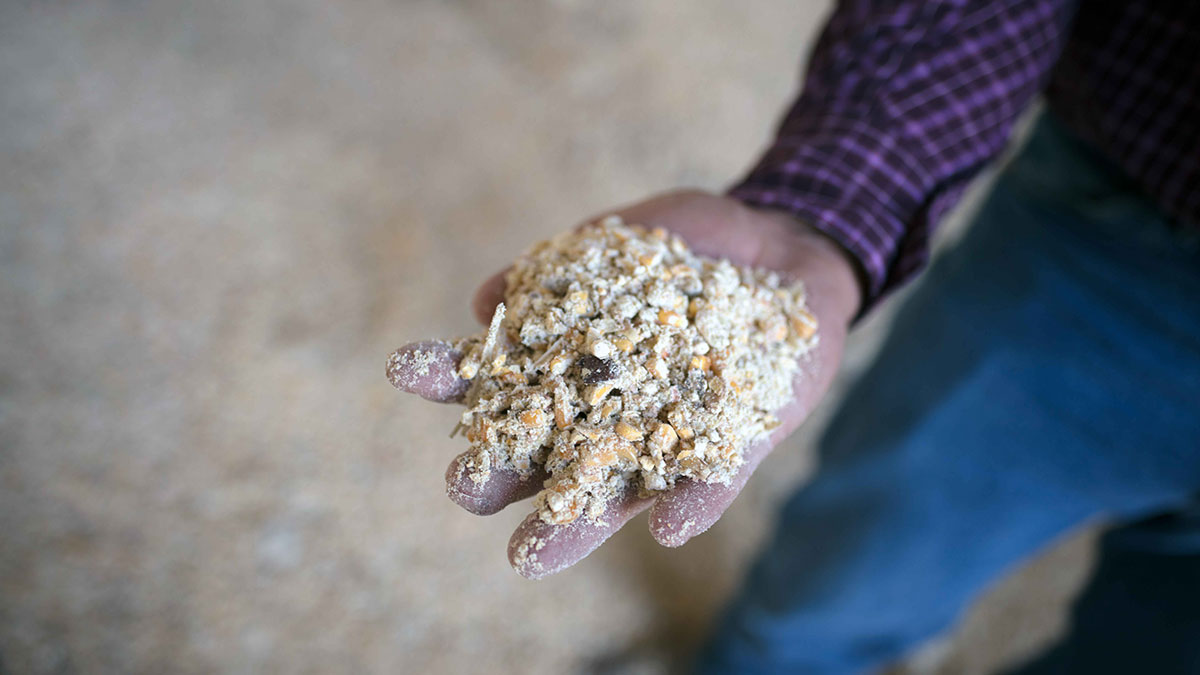
nothing goes to waste
Distillers' grains are usually a waste product of the brewing process. However, to cattle they are just another tasty treat.
Cattle are year-round rock star upcyclers
So what do cattle eat during the winter? Cattle eat a balanced diet of forages, crop residue, and supplements that are all inedible to humans. Because of their unique digestive tract, cattle are able to convert these products into high-quality beef,
But here's the thing, this doesn't just happen in the winter. Cattle are year-round sustainability rock stars and graze pastures as nature's perfect solar-powered, food-producing machines.
